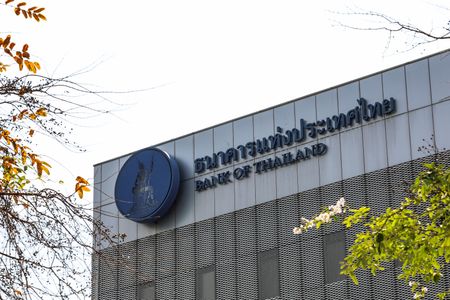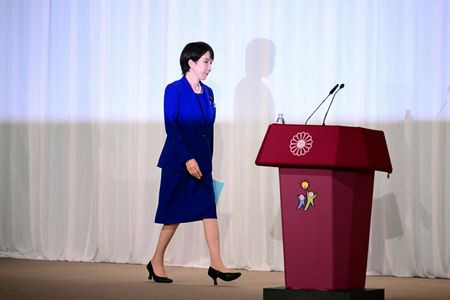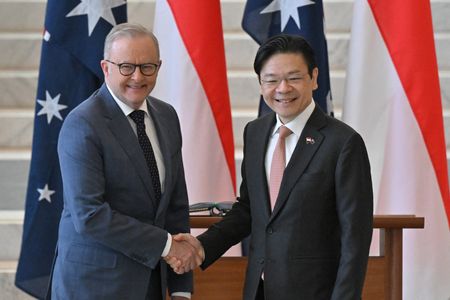By Orathai Sriring and Kitiphong Thaichareon
BANGKOK (Reuters) – Thailand’s central bank left its key interest rate steady on Wednesday, surprising markets which had expected another cut as the economy struggles with a strengthening baht, negative inflation and U.S. tariffs.
But policymakers left the door open to more easing if the glum outlook for Southeast Asia’s second-largest economy deteriorates further, and economists said they still expect two more rate cutes by the end of next year.
“We got this one wrong, together with most forecasters, but we believe that a further easing in monetary policy in the near future remains a no-brainer, given the poor fundamental backdrop,” said Miguel Chanco, chief emerging Asia economist at Pantheon Macroeconomics.
The Bank of Thailand’s monetary policy committee voted 5 to 2 to keep the one-day repurchase rate steady at 1.50% at Wednesday’s review, the first for new Governor Vitai Ratanakorn. The BOT has cut rates four times in the past year.
“The transmission of previous policy rate cuts to the economy is ongoing,” the central bank said in a statement.
“We must preserve policy space for risks in the medium term”, assistant governor Sakkapop Panyanukul told a news conference after the decision. “We’ll cut rates if the outlook deteriorates”.
The rate hold would give the new governor time to settle into the role before another cut expected at the next meeting on December 17, said Kobsidthi Silpachai, head of Capital Markets Research at Kasikornbank.
The BOT said it now expects the economy to grow 2.2% this year and 1.6% in 2026, slightly lower than previous forecasts of 2.3% and 1.7%, respectively. Last year’s growth was 2.5%.
“The economy in the second half of 2025 throughout 2026 is expected to slow down due to the impacts of U.S. trade policies,” the central bank said.
Only six of 26 economists in a Reuters poll had predicted rates would be kept steady on Wednesday. Nineteen economists had predicted a 25 basis-point cut, and one had forecast a 50 bps cut.
EASING CYCLE LIKELY ISN’T OVER
Both Pantheon Macroeconomics and Capital Economics said after the decision that they expect two more 25-bps rate cuts in this cycle, taking the terminal policy rate to 1.0% next year.
The central bank cut its forecast for headline inflation this year to zero, from 0.5% previously. The inflation rate has been negative for the past six months, well below the central bank’s target range of 1% to 3%, but the BOT says deflationary risks are low.
The BOT said inflation was expected to be 0.5% in 2026, before it returns to the target range by early 2027.
Thailand has lagged its regional peers as it struggles with U.S. tariffs, high household debt, weak consumption, and a strong currency.
The central bank did upgrade its view on exports, forecasting a 10% rise this year versus its previous forecast of 4% seen in June, adding the impact of U.S. tariffs has been less than expected. But 2026 exports were expected to shrink by 1%.
On Tuesday, Finance Minister Ekniti Nitithanprapas said the government would spend 44 billion baht ($1.35 billion) on a consumer subsidy program and will roll out other stimulus measures to try to lift growth above 2.2% this year.
Prime Minister Anutin Charnvirakul’s new government has a limited window to implement its measures, with the premier planning to dissolve parliament by the end of January with a general election to be held in March or early April.
($1 = 32.51 baht)
(Reporting by Orathai Sriring, Kitiphong Thaichareon and Chayut Setboonsarng; Editing by John Mair, David Stanway and Kim Coghill)










